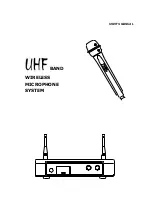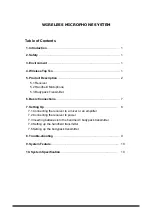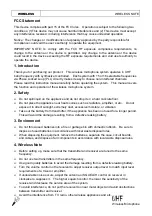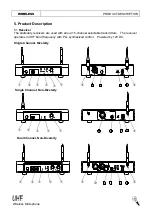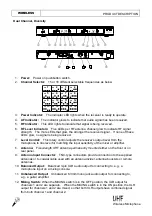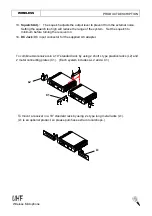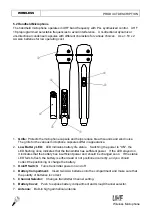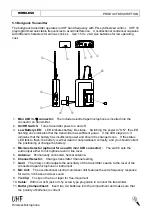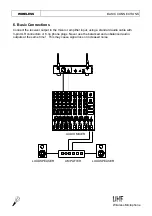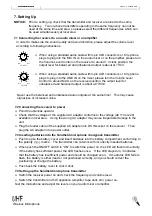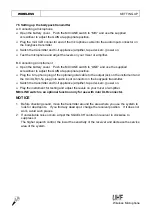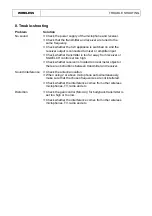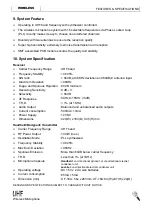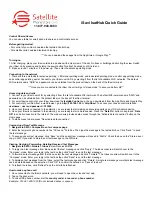
WIRELESS
WIRELESS NOTE
1
Wireless Microphone
FCC Statement
This device complies with part 15 of the FCC rules. Operation is subject to the following two
conditions: (1)This device may not cause harmful interference and (2) This device must accept
any interference received, including interference that may cause undesired operation
Notice : The changes or modifications not expressly approved by the party responsible for
compliance could void the user
’
s authority to operate the equipment.
IMPORTANT NOTE: To comply with the FCC RF exposure compliance requirements, no
change to the antenna or the device is permitted. Any change to the antenna or the device
could result in the device exceeding the RF exposure requirements and void user
’
s authority to
operate the device.
1. Introduction
Thank you for purchasing our product. This wireless microphone system operates in UHF
band frequency with synthesizer controlled. Each system with 15 or 16 selectable frequencies
via Phase Locked Loop (PLL) circuitry makes it easy to choose non-interfered channels.
Please read this instruction manual carefully before operating the system. This manual covers
the function and operation of the wireless microphone system.
2. Safety
Ø
Do not spill liquid on the appliance and do not drop it on a hard concrete floor.
Ø
Do not place the appliance near heat sources such as radiators, amplifier, or etc. Do not
expose it to direct sunlight, extremely dust, excessive moisture, or vibration.
Ø
Take out the battery from transmitter, if the appliance has been not used for a longer period.
This will avoid the damage resulting from a defective leaking battery
3. Environment
Ø
Do not throw used batteries into a fire or garbage bin with domestic rubbish. Be sure to
dispose of used batteries in accordance with local waste disposal rules.
Ø
When disposing the equipment, remove the batteries, separate the case, circuit boards,
and cables, and dispose of all components in accordance with local waste disposal rules.
4. Wireless Note
Ø
Before setting up, make sure that the transmitter and receiver are tuned to the same
frequency.
Ø
Do not use two transmitters in the same frequency.
Ø
Use good quality batteries to avoid the damage resulting from a defective leaking battery.
Ø
Turn the volume control on the receiver to adjust receiver output level to match input level
requirements of a mixer or amplifier.
Ø
If undesirable noise occurs, adjust the antenna or SQUELCH control on receiver in
clockwise to suppress it. The higher squelch control, the lower the sensitivity of the
receiver and decrease the service area of the system.
Ø
To avoid interference, do not put the receiver too near metal object and avoid obstructions
between transmitter and receiver.
Ø
Avoid the interference from TV, radio, other wireless appliances and etc.

